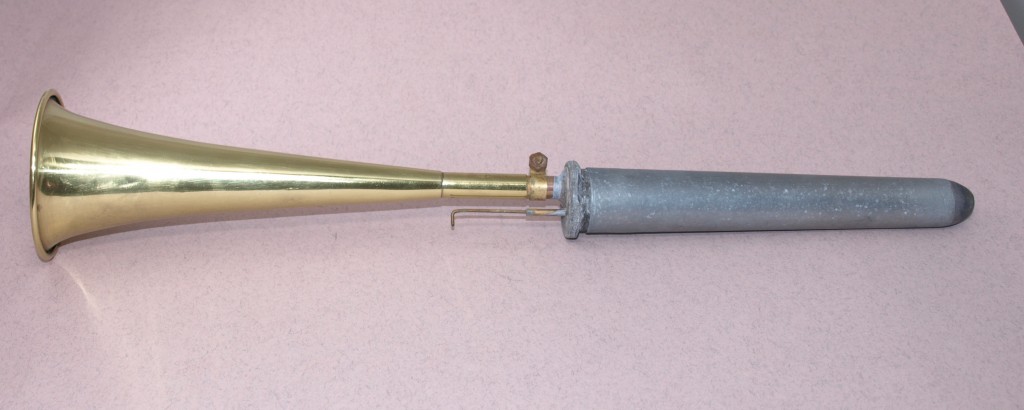

The dynamics of the orchestral instrument are difficult to imitate and whilst the role of the organ trumpet is also to reinforce the ensemble or provide a striking solo, the tone varies equally.
Construction:
Metal, tapered resonators, or spun brass bells.
Tonality:
Pipe metal trumpets, on theatre organs, span a range from restrained smoothness to spiky fire. Brass trumpets, something of a Wurlitzer speciality, have a characteristic loud ‘coo’ but are not as strident as their appearance might suggest. Because of this range, the tonality is noted below against the typical stop names for each builder. W = Wurlitzer, C = Compton, Ch = Christie.
|
STOP NAMES |
|
|
Trumpet (W) |
Of pipe-metal, a relatively quiet and smooth stop which in the better examples develops a slight edge imitating the tounging of the trumpeter. Such examples benefit from good tremulation. Sometimes referred to as a ‘Style D trumpet’ after the Wurlitzer models they most frequently appeared on. If brass (and there is no way of telling from the original stopkeys), are louder and with a characteristic timbre induced by the brass bell. Whilst perhaps not totally convincing in an untremulated chorus, they are a distinctive and useful solo stop and ensemble-builder with tremulant. |
|
Trumpet (C) |
Loud, assertive chorus reed with plenty of harmonics, capable (untremulated) of putting real fire into a convincing straight chorus. Equally, when combined untremulated with the Tuba, can produce quite explosive interjections and fanfares. Those examples lucky enough to enjoy a deep tremulant also ‘come to life’ as a lyrical solo stop, almost cello-like in the tenor. |
|
Trumpet (Ch) |
Usually the keenest, most fiery trumpet. Approaching an English Horn in harmonic development and attack, they have a more balanced structure of overtones that allows blend with the ensemble at pitches other than 16′. |
|
Muted Trumpet |
Bright reed stop used for both solo and ensemble work. Specified by John Compton and frequently found on smaller instruments, fulfilling a hybrid role between colour and chorus reed, not unlike the incisive role of the orchestral muted brass. Construction: Tonality: |
|
French Trumpet (W) |
Wurlitzer’s closest attempt at a Compton Trumpet, but with a slight nasality. |
|
French Trumpet (Ch) |
Close equivalent to Orchestral Trumpet, found especially on later Christies. |
|
Trombone |
16′ extension of the stop. |
